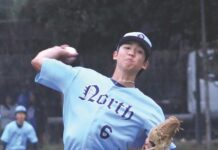The Hello Kitty exhibition currently on display at the Japanese American National Museum in Little Tokyo is one of the best exhibitions I have ever seen there — and I have seen some really good exhibitions there.
I am not part of what would traditionally be considered Hello Kitty’s core audience. True, I was the right age for it when Sanrio first introduced Hello Kitty to the United States in 1976. And I did grow up in the South Bay, which had the second Sanrio store ever built in California (Gardena is second only to San Jose.
The Hello Kitty exhibition currently on display at the Japanese American National Museum in Little Tokyo is one of the best exhibitions I have ever seen there — and I have seen some really good exhibitions there.
I am not part of what would traditionally be considered Hello Kitty’s core audience. True, I was the right age for it when Sanrio first introduced Hello Kitty to the United States in 1976. And I did grow up in the South Bay, which had the second Sanrio store ever built in California (Gardena is second only to San Jose.
It was the girls who owned the pink Hello Kitty pencil sets, Hello Kitty erasers and Hello Kitty backpacks when I was growing up.
However, as “Hello! Exploring the Supercute World of Hello Kitty” clearly demonstrates, Hello Kitty’s potential audience is everyone in the entire world.
Part of the fun of the Hello Kitty exhibition is discovering all of the different and unique ways Hello Kitty can appeal to anyone.
Yes, they have the classic Hello Kitty schoolgirl supplies, collected and preserved in glass museum cases. But what grabs your attention is all the other stuff — the Hello Kitty toaster, Hello Kitty juicer, Hello Kitty bowling ball, Hello Kitty guitar, Hello Kitty surfboard, etc. Marvel at the plates, headrests, pillows and other items from the Hello Kitty-themed airliner. The Hello Kitty motor oil is not a myth, nor is the Hello Kitty grave marker.
The things that I found the most interesting were the traditional Japanese cultural items rendered in Hello Kitty-style, from Hello Kitty beckoning cats to Hello Kitty hinamatsuri (girls day) dolls. According to the exhibition, these items were relatively new additions to the Hello Kitty universe. In other words, Hello Kitty conquered the world before returning home (ignoring the official biography which says that Kitty White — that’s her real name — was “born” in England).
Is “conquering the world” too strong a term to use to describe this pop culture phenomenon?
According to reports, the Hello Kitty exhibition broke JANM’s attendance records on its opening weekend. And on the day I was there, well after the grand opening and after the Hello Kitty Con, attendance still seemed quite high.
Skeptics and cynics may well ask, what does Hello Kitty have to do with Japanese American history and culture?
Well, Hello Kitty is Japanese in origin and most definitely influenced by the Japanese interest in all things “kawaii” or cute. And remember, the first Sanrio stores in the United States were in places with high Japanese American populations. Young Japanese American girls would have been amongst their first customers. It is no coincidence that Gardena’s current store is in the Marukai Pacific shopping center, and that there is a Sanrio store in the middle of Little Tokyo.
And the exhibition has certainly been good for the museum. “Hello!” empties out into the museum’s permanent history exhibit, with its focus on discrimination, internment and the fight for civil rights. The Hello Kitty exhibition has undeniably also been good for the Little Tokyo community as well, as people visit local shops and restaurants before or after visiting the museum.
JANM built its reputation by telling the story of the first generations of Japanese Americans. But the museum’s future must include the stories of the current generations. Hello Kitty is a part of that story, and a fun, entertaining way to draw more people to the museum.
James Fujita is a former GVN news editor. He works as a copy editor for the Visalia Times-Delta in California’s Central Valley. Fujita can be contacted at jim61773@yahoo.com


















